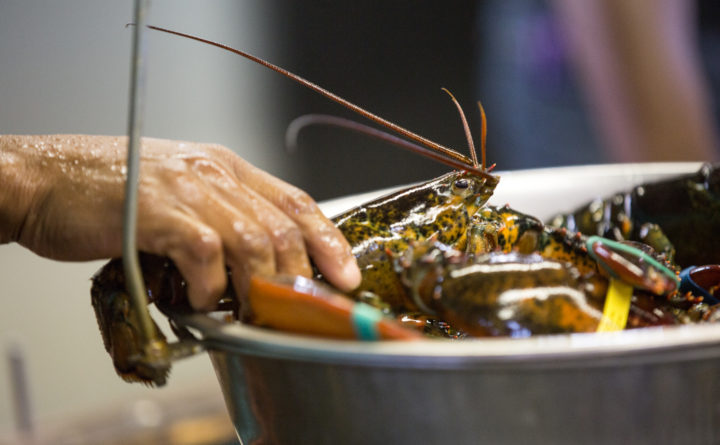
Trade hostility from across the ocean was supposed to take a snip out of the U.S. lobster business, but the industry is getting a lifeline from its northern neighbor.
Heavy demand from Canada is buoying American lobster as both countries head into the busy holiday export season, according to federal statistics and members of the industry. It’s a positive sign for U.S. seafood dealers and fishermen, even as the industry struggles with Chinese tariffs.
China emerged as a major consumer of American lobster earlier this decade, but the country slapped heavy tariffs on exports in July amid its trade kerfuffle with President Donald Trump’s administration. Lobster exports slowed to a crawl.
Industry watchers forecast the move as a potential calamity for U.S. seafood, but Canada has boosted the value of its lobster imports from America by more than a third so far this year, up to more than $180 million through September.
Canada has its own lobster fishing industry, which harvests the same species as U.S. fishermen, and the country sells lobsters domestically as well as to Europe and Asia. The country’s importing so many from the U.S. this year because it needs enough supply to send to China, said members of the lobster industry on both sides of the border.
“They go there to go to China, to avoid the tariffs,” said Spiros Tourkakis, executive vice president of East Coast Seafood, a dealer in Topsfield, Massachusetts.
The brisk sales to Canada are among a number of unexpectedly positive signs in a U.S. lobster fishery that had been primed for a difficult year. The lobster fishing business is based mostly in Maine, where the catch fell by about a sixth last year to a little less than 111 million pounds. The price to fishermen was also down slightly last year.
This year’s catch total won’t be available until early 2019, but it appears to have been a strong year, and prices to fishermen seemed to be a little bit better, said Beth Casoni, executive director of the Massachusetts Lobstermen’s Association. Lobsters have also been easy to find in stores for domestic consumers, and the retail and wholesale prices have been competitive with recent years.
“Most of the guys feel like they’ve had a pretty good year,” Casoni said. “About a month ago everybody was really concerned about not going to China due to the tariffs. From what I’ve heard, there hasn’t been much of an impact locally.”
The Chinese tariffs remain a concern for New England’s international seafood dealers, who have seen China grow from a tiny fraction of the international market to one of its biggest buyers. The country took about 5 million pounds of U.S. lobster, valued at $40 million, from July to September last year, and saw those number about halved this year.
The loss of Chinese market share has come at a time when American lobster shippers have also lost ground in Europe, as Canada and the European Union reached a seafood trade deal that put the U.S. at a disadvantage.
A big test for the U.S. lobster industry will be the Christmas holiday in Europe and Chinese New Year, which are typically major shipping periods for the crustaceans.
“My latest thinking is that the U.S. economy is strong and this is going to carry over into lobster,” said John Sackton, a seafood analyst and publisher of SeafoodNews.com. “Exports have not stopped, just down about 50 percent, so some are still being shipped.”
This article originally appeared on www.bangordailynews.com.







